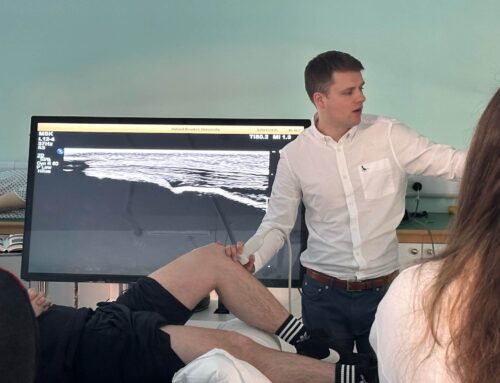Muscle Strength Testing
Written by: Gabrielle Jackson, Edited by: Faye Appleby
29th January 2021
At Elite Physical Medicine, a crucial part of your treatment plan, usually involves regular muscle testing.
Muscle testing is where the physiotherapist uses objective markers to measure the muscle strength of a patient. Testing muscle strength is an important part of the initial assessment process. It enables us to create a personally tailored exercise programme that will address any strength deficits our patients may have. It also gives us a really helpful marker to track progress through the rehabilitation process.
In clinic, we regularly test muscle strength using a handheld dynamometer which is a small, portable, and easy-to-use device. It has been reported to be valid and reliable for isolated strength tests.
Isokinetic testing, is classified as the gold standard in research, but when compared to handheld dynamometry, it is more time consuming, and not always practical for all. Capacity testing is another style of muscle testing which we tend to use for sport-specific patients. This is a process where we ask our patients to perform a certain exercise for as many repetitions as possible until failure, known as maximal effort.
Handheld dynamometry is a perfect, easy tool for us to use in clinic, it can give patients a real time reading of their muscle strength. It is also very versatile in nature, allowing us to test multiple movements of a joint in all planes, and throughout range of motion.
This style of muscle strength testing has proven to be extremely reliable and valid in our practice. We are confident that this method is in the best interest of the patient and helps guide the rehabilitation process appropriately.
We use handheld dynamometry for muscle testing in many stages of our treatment, including pre-event screening, post-surgery rehab, injury prevention, and rehabilitation. We recommend muscle testing in almost all cases we are presented with, as it adds great value to our clinical assessment.
If you are wanting to increase your muscle strength, or have a recent injury, or if you’d like guidance on preparing for increased training, please contact the clinic for more information, and to book an assessment.
References:
- Karabay, D., Yesilyaprak, S.S., Sahiner, P.G., (2020) ‘Reliability and validity of eccentricstrength measurement of the shoulder abductor muscles using a hand-held dynamometer’. Physical Therapy in Sport. 43 pp. 52-57. doi: 10.1016/j.ptsp.2020.02.002
- Stark, T., Walker, B., Phillips, J.K., Fejer, R., Beck, R.,(2010)‘Hand-held dynamometry correlation with the gold standard isokinetic dynamometry: A systematic review’. American Academy of Physical Medicine and Rehabilitation.3(5) pp. 472-479
- Cadogan, A., Laslett, M., Hing, W., McNair, P., Wiliams, M., (2011)‘Reliability of a new hand-held dynamometer in measuring shoulder range of motion and strength’. Manual Therapy. 16(1) pp. 97-101. doi: 10.1016/j.math.2010.05.005
- Cuthbert, S.C., Goodheart, G.J., (2007) ‘On the reliability and validity of manual muscle testing: a literature review’. Chiropractic and Osteopathy. 15(4). doi: 10.1186/1746-1340-15-




